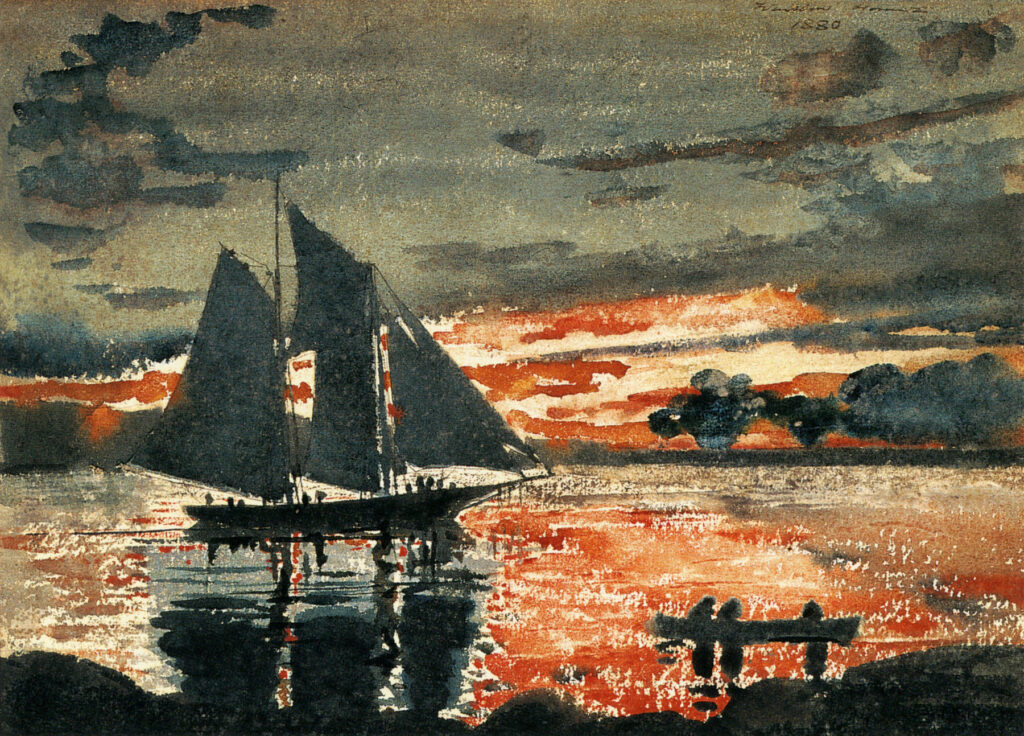
Winslow Homer cannot officially be considered an Impressionist because he was from Massachusetts and not France but that geographic disconnection became a defining factor of Homer’s brilliance. While his technique was greatly influenced by his Parisian colleagues, his subject matter was distinctly New England. Just like Monet, his greatest muse was the Atlantic Ocean but Homer saw her from the other side and presented an entirely different aspect of her beauty. Homer’s Atlantic was defined by muted colors and suggested restless action. Homer’s work compared to the French Impressionists represented the distinction between American and French life at the turn of the twentieth century. The French were depicting idyllic landscapes and a life of leisure, always still and serene. While Homer’s subjects, whether at work or at play, constantly suggested motion – either fighting against nature or embracing it. The natural world is never still. Homer saw the beauty in that and captured his impression of it with paint on canvas and that, in my humble opinion, makes him an Impressionist.
Sunset Fires is my favorite work of Homer’s because it captures the incendiary tones of a North Atlantic sunset. The subject of the painting is the sky itself, blooming with orange as twilight creeps down from above. A schooner and a dingy are silhouetted against the vibrant colors. All the humans in the painting are going about their business, presumably at the end of a day laboring at sea, each merely a muddled shadow against the sunset’s reflection. I believe that this was Homer’s way of showing man’s insignificance before nature’s beauty.
Winslow Homer’s work is prolific and he’s one of America’s painters. Check out more of his work here.
